Net Zero Projects
Net Zero is all about conserving water, reducing energy use, and eliminating solid waste to improve the environment, save money, and help communities become more sustainable and resilient. EPA researchers are accomplishing this goal by developing and implementing Net Zero strategies, approaches, and technologies like the ones listed on this site.
Advancing sustainability in communities, municipalities, and military installations requires an integrated, collaborative approach from multiple sectors. EPA has joined forces with several partners, including the military, universities, and communities across the U.S., to pool resources and multidisciplinary expertise while working together towards achieving the shared goal of Net Zero Water, Energy, and Waste.
Waste characterization project in Telluride, Colorado provides first ever look at waste streams from short term vacation rentals

Colorado tourism has been booming for the past decade, creating unique environmental protection and communication challenges. One example is the waste and materials generated from short-term rental properties, which are difficult to quantify and control. Communication with vacationers about available recycling and waste diversion programs is an ongoing challenge.
In March and June of 2019, EPA staff from the Office of Research and Development and Region 8 joined forces to perform a detailed, complete waste audit for two condo rental properties in Telluride during the peak ski and summer festival seasons.
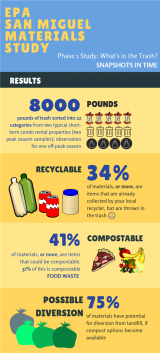
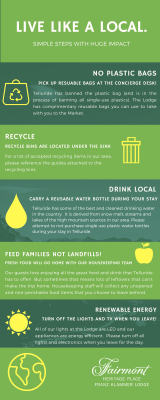
The results showed that about 75% of what is thrown away by short term renters is divertible, primarily through existing programs. Using this information, ORD and Region 8 staff worked closely with local stakeholders including representatives from the two properties, Planet Bluegrass (festivals), and officials from Telluride Ski and Golf, the Towns of Telluride and Mountain Village, and San Miguel County to design an intervention package using social marketing techniques aimed at reducing waste from rental properties and encouraging proper diversion. The interventions were implemented in February 2020. Due to COVID-19 fieldwork restrictions, planned waste characterization in March 2020 was cancelled.
In August 2022, the EPA team completed a third round waste audits which showed fewer recyclables in the waste stream (e.g. more recyclables were making it to the recycling bin instead of the trash can). A fourth round is being planned for ski season to confirm whether the pattern observed in summer holds.
Aquifer recharge project continues in partnership with Army at Fort Irwin

Under the typical hydrologic cycle in the Southwest U.S., excess rainfall during winter months flows overland to the ocean or dry lake areas. While there is no net loss of water in a global hydrologic balance, local fresh water is lost due to mixing with seawater (coastal areas) and evaporation (desert areas). Key questions for net zero water loss in these areas are: how might some of the urban/ suburban wet weather runoff be diverted to surface storage, infiltration, and recharge into subsurface aquifer storage (i.e. Managed Aquifer Recharge or MAR)? And what is the initial quality of the recharge water and how is water quality impacted during subsurface residence prior to extraction by pumping?
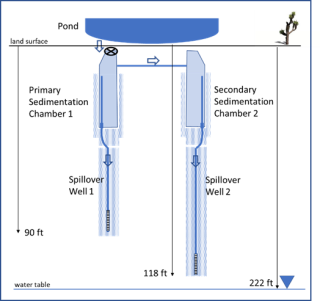
The Fort Irwin Aquifer case study began in 2015 and investigates wet-weather management at a large Army base located in the Mojave Desert. This project focuses on two popular options for gravity-fed infiltration in this area: 1) infiltration basins (wider than deep); and 2) vadose or drywells (deeper than wide). The Sleepy Hollow neighborhood study site at Ft. Irwin employs a wet-weather flow system using a pond for flow capture and pretreatment and an advanced drywell system for additional treatment and infiltration. The Net Zero team helped fund the addition of a monitoring well next to the drywell system using air rotary drilling techniques in partnership with USGS.
A monitoring field program has been implemented to characterize water flows and sediment transport through the Fort Irwin wet-weather system. Initial findings reveal the recharge from a single pond (70 m diameter) could be more than matched by only 5 drywells. Unlike the infiltration basin, the drywell bypasses the shallow, tight layers and soils with potentially soluble salts and releases less-contaminated water back into the ground. Characterizing site-specific geologic stratigraphy, or layering, is important to ensure infiltration reaches the aquifer water table in a timely manner rather than perch in the vadose zone.
In 2021, this research examining drywells will transition to an agricultural MAR investigation at the Terranova Ranch near Fresno, CA. The area is experiencing groundwater overdraft and subsidence in California’s Central Valley, and this project is an important test case for groundwater recharge under the California Sustainable Groundwater Management Act (SGMA).
Net Zero team awarded RSTIP funding for study of contamination in residential recycling streams

China and other countries have recently halted the import of common recyclables from the U.S. due to unacceptable levels of contamination (items that can’t be recycled) finding its way into recycling bins. Single-stream recycling has proved to be a double-edged sword in this context: increasing overall participation in recycling programs but simultaneously pushing contamination rates much higher and lowering the overall value of materials collected.
As a result, many municipalities are facing tough decisions about cutting back on recycling programs or closing facilities altogether.
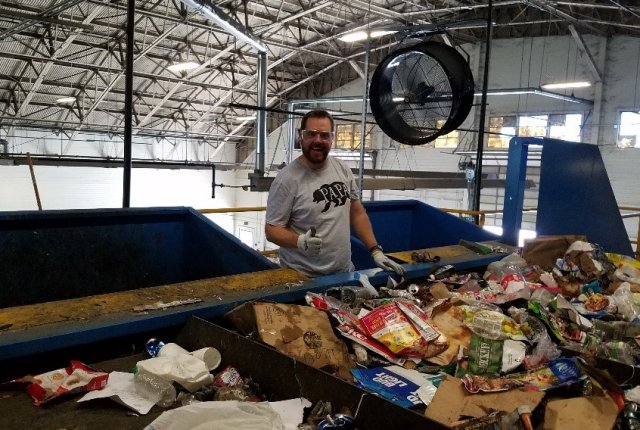
Yet, some municipalities are still successfully implementing recycling programs at a cost-benefit, which suggests that levels of contamination are lower in these locations. Whereas a host of factors that influence recycling rates have been identified and studied extensively in the scientific and professional literature, factors influencing contamination rates and the continued viability of municipal recycling programs have received almost no attention.
In 2020, a team of scientists from EPA’s Office of Research and Development, Office of Land and Emergency Management, Region 3 and Region 8 put together a successful proposal to ORD’s Regional, State and Tribal Innovation Program (RSTIP) to address this important gap in knowledge. The proposal builds upon prior work on characterizing and reducing contamination in single stream recycling that was funded through Net Zero at Fort Riley Kansas and at Idaho National Laboratory.
The new project seeks to understand why and how some recycling programs continue to succeed in the current challenging environment by identifying common social and structural factors of successful municipal recycling programs, and then partnering with state and local officials in Colorado and Delaware to develop a package of interventions to reduce contamination rates in under-performing localities.
In addition to working with communities and states, the RSTIP team is also working with staff from the Recycling Partnership and University of Illinois on the identification of factors influencing contamination rates and the design of effective interventions to reduce contamination.
Evaluating Real World Performance and Impacts of Kitchen Digesters

Food waste comprises 30-40 percent of municipal solid waste streams. Reducing or disposing of food waste in environmentally friendly ways represents a significant challenge for consumers and cities across the U.S. Organics disposal bans or commitments to divert food waste from landfills have led to aggressive marketing and purchasing for a variety of on-site food waste processing systems, including the wet digester examined here, which claim to turn food waste into relatively clean waste-water that can be piped into any sewer drain.
In 2019, the State of New York enacted the Food Recovery and Recycling Act, which bans organic waste sent to landfill from larger commercial kitchens such as hotels or supermarkets. As a result, many commercial kitchens in the New York City area have invested in their own on-site food waste digester as an alternative to contracting to organic waste haulers. Because this technology is relatively new, there has been little research on the impacts and outputs of these systems when used in a real-world kitchen operation.
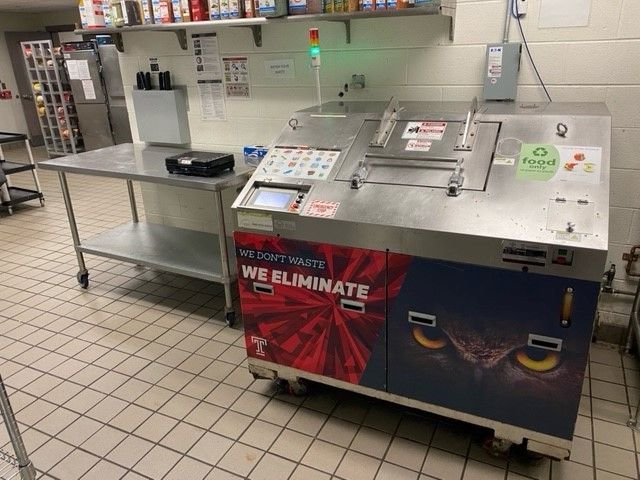
Manufacturer’s marketing claims, created in optimal, lab-based conditions, lack clear empirical evidence for the usability and environmental impacts of these systems. Important questions about the quality of the output and the impacts/ implications further down the treatment or disposal chain have not been clearly addressed.
The Net Zero team has established a partnership between multiple offices of the EPA and the NYC Departments of Sanitation and Department of Environmental Quality to provide answers to these questions. Moving forward, we will work together with kitchen staff in a hotel chain to sample liquid effluent (the residual product from food waste digestion that goes into the sanitary sewer) as it is produced in everyday use from two competing wet-digester technologies, ORCA and Bio-Hitech, currently in use.
Real-world samples will be supplemented with controlled effluent testing using a food waste blend that represents common feed stock for the digester. These sampling efforts will form the backbone of a broader life-cycle analysis examining longer-term performance, capital costs, existing infrastructure, and the quantity and quality of the effluent wastewater stream.
The results of this study will be useful to states, communities, and individuals seeking to invest in these technologies as a means of reducing food waste sent to landfill, as well as wastewater treatment professionals and operators seeking to understand the impacts that these technologies (and the effluent they produce) may have on downstream pipe and wastewater treatment systems under widespread use.
Net Zero team continues work on WNTR demonstration at Fort Campbell, KY and secures funding for complimentary M36 Water Loss Audit

EPA has partnered with the U.S. Army and the U.S. Department of Defense (DoD) to advance the sustainability goals of Net Zero/Net Positive (NZ/NP) energy, water, and waste. EPA scientists and engineers are using cutting-edge research to develop technology and tools to help military installations and communities find ways to reduce their water, waste, and energy footprints while fostering economic growth and promoting citizen health and well-being. Successful NZ/NP strategies and technologies can be applied and adapted to achieve greater sustainability and resiliency in military installations and communities across the country and worldwide.
In 2021, Fort Campbell was awarded additional ITTP funding to explore the use of satellite leak detection as an alternative to traditional methods such as potholing or water auditing (e.g. M36). The satellite leak detection tests will begin in 2022 and the M36 work that is ongoing will provide an important source of comparative data. The idea for this project was spearheaded by Steve Clark, (CESER) who will serve on the project advisory board.
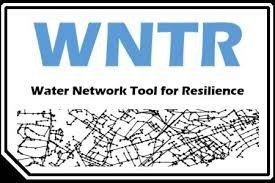
In 2018, the Army implemented a new Water and Energy Security Directive which stipulates that all U.S. Army installations must have a plan to provide water and power to mission critical infrastructure for 14 days in the event of a contingency event that disrupts normal distribution or supply. This directive, combined with the new and more stringent resilience and security assessment requirements in the America’s Water Infrastructure Act, means that many Army installations are working quickly to assess the integrity of their existing drinking water infrastructure.
A key piece of the puzzle for water security planning is understanding where mission-critical infrastructure overlaps with vulnerable areas of the existing drinking water treatment and distribution network. Finding and fixing leaks in pipe networks supplying critical mission areas can significantly reduce the burden of finding adequate alternative supply for the Water Security Directive.
EPA researchers are demonstrating how the Homeland Security Research Program’s Water Network Tool for Resilience (WNTR) can be used to support planning and implementation of the Water Security Directive at Fort Campbell, a large Army installation on the KY/TN border.
A formal Net Zero Partnership was established with Ft. Campbell in late 2017. Working in partnership with Fort Campbell Department of Public Works (DPW) staff and local contractors, EPA staff will produce a resilience assessment for the pipe network in mission critical areas.
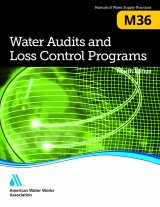
These efforts will be complemented by an installation-wide water loss audit using the American Water Works Association’s (AWWA) M36 methodology combined with district metering to pinpoint leaky areas of the existing pipe network, with special emphasis on critical mission areas. Funds and training for this effort were secured through a successful, EPA-led application to the Army’s Installation Technology Transition Program (ITTP).
Work on the M36 water audit will begin once COVID fieldwork restrictions are lifted and will be conducted jointly with Fort Campbell Department of Public Works staff and scientists from the Construction and Engineering Research Lab (CERL) at the Army Corps of Engineers. This will be the first use of the M36 methodology on an Army installation.
Furthermore, a comparative analysis of satellite-based leak detection technologies is also planned at Fort Campbell once the M36 water loss audit is complete. This will provide additional data complementing the M36 audit and will advance the understanding of the water network’s resilience.



